Introduction
A
set of bedding is always included with at least one flat or fitted bed that
covers the mattress covers; a flat top sheet; is a blanket, a quilt, or a
duvet. Sometimes a duet cover has to be used in addition - the top sheet and
several pillows are also referred to as pillow shams. Extra blankets etc. can
be added to ensure the necessary insulation in cold sleeping areas. A common
practice for children and some adults is to decorate a bed with animals, dolls,
and other soft toys with plush stuffed animals. These are not included in the
title of bedding, although they can provide extra warmth to the slipper.
Bedding
Bedding is also known as bedroom or bed linen, it is the material placed on top of a bed mattress for hygiene, warmth, mattress protection, and decorative effect. The bedding is removable and washable in the human sleeping environment portion. Multiple sets of beds for each bed are often washed in rotation and changed to improve the comfort of the room at room temperature. Most standard measurements for bedding are rectangular, but there are also a few square shapes that allow the user to sit on the bed regardless of the length-oriented tendency.
What is a bedding sham?
A
bedding sham is a decorative pillow that transforms a pillow into a
useful size for a person’s bedding set. Pillow shams usually come in the form
of conventional pillows: standard shams (26 "x 20"), King shams (36
"x 20"), and Euro shams (26 "x 26"). In contrast to
pillows, the pillowcase is often open in the middle of the back with some
overlapping fabric. Pillow bedding shams are generally sold in pairs
made out of fabric from a matching duvet cover.
History of bedding
By
3400 BC, the Egyptian pharaohs removed their beds from the ground and lay on a
raised surface. Bed linen was widely developed in Egypt. It was seen as a
symbol of light and holiness, as well as a symbol of prosperity. Egyptian
mummies were often wrapped in bedsheets. Mattresses in the Roman Empire were
stuffed with wool, feathers, shells, or straw. The beds were decorated with
paint, bronze, silver, jewelry, and gold. In Japan, mattress types were stuffed
with cotton and rolled up for daytime storage.
During
the Renaissance, mattresses were stuffed with straw and feathers and then
covered with silk, velvet, or satin material. In the eighteenth century,
Europeans began to use bed frames made of wrought iron and mattresses made of
cotton. Bedsprings were invented in the 19th century, also called box springs.
In the twentieth-century United States, consumers bought indoor mattresses by
the water bed after the 1960s and adopted Japanese-style fusion, air
mattresses, and foam rubber mattresses and pillows.
Elements of bedding
1. Bed skirt or bed ruffle
The Bed skirt or bed ruffle is a piece of decorative fabric that is placed between the
mattress and the spring of a bed box. The purpose of a bed skirt is to give a
stylish look to a bed without exposing the side of the box fountain or any
space under the bed that can be used as storage. Decorative bed boots can be
used to cover the legs and enhance the decor if the bed skirts do not reach the
floor. Historically, bed skirts were used to block drafts that could cool the
bottom of the bed and prevent dust from accumulating under the bed.
2. Bedspread or bedcover
A Bedspread or bedcover, often decorative, protects the bedding from dust or other
contamination during the day with pillows that go on or near the side with
pillows. It doesn’t require a bed skirt and was especially popular in North
America after World War II. Can be removed at night and, if desired, replaced
by a coverlet or duvet cover.
3. Blanket
A blanket is a piece of soft cloth that is enough to cover or tie a great part of
the user's body. It is usually used when a person goes to sleep or rest. It is
trapped in a net of bright body heat that would otherwise be lost through
convection and help keep the user warm. Many children and adults use the
blanket as a comfort item. Wool blankets are warmer and relatively slow to pick
up than cotton. The most common types of blankets are acrylic, woven polyester,
mink, cotton, glue, and wool. The blankets come with foreign crafts and
exterior elements as a covering of crocheted afghan or silk.
 |
| Blanket |
4. Bolster
A bolster is a long narrow pillow or cushion full of cotton or fiber. Bolsters
are usually strong for back or arm support or for decorative applications.
These are not an ideal size or shape and usually have a zipper or hook-and-loop
enclosure. A foam insert is occasionally used for additional support. A bolster
is also referred to as a cushion, pillow, and prop. A bolster pillow is a
common size of a 5 lace pillow.
 |
| Bolster |
5. Boudoir pillows or breakfast pillows
Boudoir pillows or breakfast pillows are beautiful rectangular pillow that is completely decorative. Many
boudoir pillows will also have flanges, and boudoir pillows are often sold
together with inserts and shams.
 |
| Boudoir pillows or breakfast pillows |
And
breakfast pillows are decorative throw pillows that usually match the bedding.
Usually rectangular, these small pillows add vibrancy and character to your bedroom
design. These pillows adorn the beds in hotels to add a touch of elegance and
color contrast to the rooms.
6. Comforter
A comforter is a type of bed that is wrapped in two lengths of fabric or sewn
together and insulated with insulating material for insulation, especially the
bottom or feathers, wool or cotton batting, silk, or polyester, and other
bottom alternative fiber. Like fillings, comforters are usually placed on top
of a top bed sheet. A comfortable is sometimes covered for protection and prolonged
use. Comfort covers are in principle like pillowcases, usually closed with
zippers or buttons. Comforters are commonly used in very cold winters, although
different types of concentrations mean mild are used in warm weather, it can
also be used in other seasons. A person suffers from a cold because of the
thickness of the comfort or the amount of perfection in it.
 |
| Comforter |
7. Coverlet
A woven coverlet is a type of bed with a pattern of
woolen yarn woven on a natural linen or cotton background. Coverlets were woven
from almost every community in the United States from the colonial era to the
end of the 19th century. That century, simple towel-knitted covers gave way to
two differently patterned hand-woven coverlets: a. Overshot weave coverlet and
b. Double fabric coverlets.
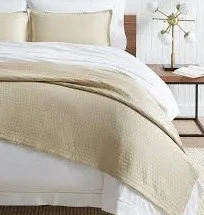 |
| Coverlet |
Summer-winter coverlets were contrasting and the
term summer-winter refers to texture rather than color. The summer-winter
coverlet should not be confused with the double weave and it is more closely
related to the overshot. Like double weave, it is dark on one side and light on
the other but has only one layer of fabric, so it is much lighter in mass and
thickness.
8. Duvet
A duvet is a type of bed that is packed in a soft
flat bag, filled with feathers, wool, silk, or synthetic alternatives, and is
usually protected by a removable covering equivalent to a pillow and cushion.
Sleepers often use a duvet without a top bed sheet, as the duvet cover can be
easily removed and can often be laundered as a bottom sheet. The duvets
originated in rural Europe and the best quality is taken from the eider ducks,
filled with feathers under the ducks or geese, which are known for their
effectiveness as thermal insulation.
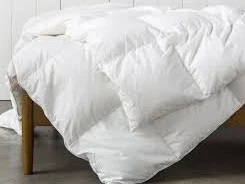 |
| Duvet |
9. European pillow or Continental pillow
At the simplest time of the square decorative pillow
for a Euro pillow bed, a Euro pillow, also known as Euro Sham or Euro Sham the pillow is an additional way to decorate a ready-made bed. These large, square
pillows usually sit on the back of a regular bed pillow, opposite the
headboard.
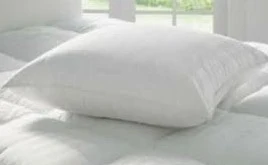 |
| European pillow or Continental pillow |
10. Flat sheet or top sheet
The bedsheet is a rectangular piece that is used
individually or in pairs as a bed, the bed holders are placed immediately below
or above. In many countries, they use a top sheet is a flat sheet, immediately
after which the people in the bed lie down. A bottom sheet has been spread over
the mattress and the people in the bed are lying on it. The bottom sheet could
be either a flat sheet or a fitted sheet that was sewn together to form a large
pocket around the top, side, and bottom edge of the mattress with a stretched
string of amethyst or hem to prevent it from slipping which closed below the
mattress. Blankets, quilts, duvets, comforters, and other bed covers are placed
on top of the top sheets.
 |
| Flat sheet or top sheet |
11. Mattress pad
A mattress pad, mattress topper, or underpad is
designed for sleeping on a mattress top. Made from a variety of materials, its
function is to provide a level of comfort, especially when the existing
mattress is worn or uncomfortable, and improve a user's sleep quality. Pillow
top mattress tops are filled with natural fibers such as cotton or down, or synthetic
alternatives like microfiber. The filling is usually shared in pockets which
helps them stay in place. It’s like a bird, although mattress toppers are
usually 4 inches or thicker. Most of the variants of mattress toppers are
present in hotel beds and are responsible for their luxury. Eggshell mattress
toppers are a great way to extend the life of the old bed.
 |
| Mattress pad |
12. Mattress protector
A mattress protector is an item of removable bedding
that sits or encases a mattress to protect it. Some mattress protectors provide
protection to the person sleeping on the mattress from allergens and
irritations such as itching, bed bugs, mold, and dead skin. Mattress toppers
are the same, although the mattress is designed with a special purpose in mind
to make it more comfortable.
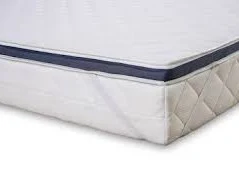 |
| Mattress protector |
13. Pillow shams
These can be placed either opposite the headboard or
in front of the pillow. This is a personal choice Standard shams: these are
regular pillow sizes, but again perfectly decorative and do not sleep.
Evening-covered pillows are placed in front of or behind a standard pillow tied
to a pillow at the head of the bed. Leaving the pillow in the shade helps keep
the baby clean and safe from pests, and a bed looks good.
 |
| Pillow shams |
14. Quilt
A quilt is a multi-layered textile that is usually
made up of three layers of fiber: a woven fabric top, a layer of batting or
wadding, and a woven back quilting technique, the process of sewing three
layers together. The sewing pattern can be the main decorative element if a single piece of the fable is used for a quilt top, but in many cases, the top
is made from a patchwork of small fabric pieces, and the pattern and color of
these pieces will be important for the design.
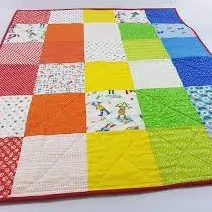 |
| Quilt |

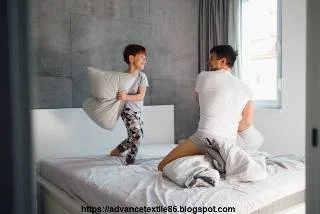
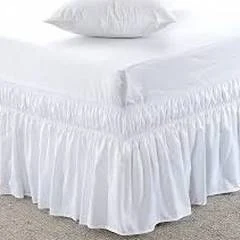








0 Comments